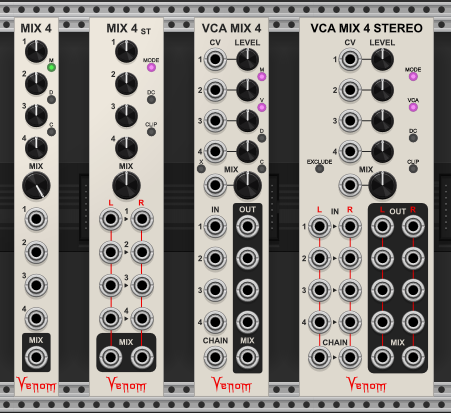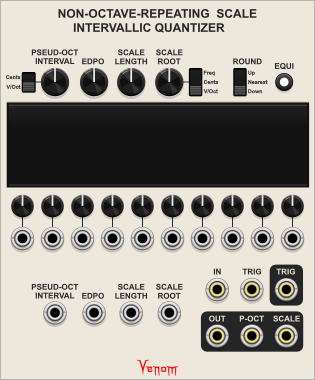I am working on my next Venom release - v2.5.0
EDIT Final release version is at Release v2.5.0 · DaveBenham/VenomModules · GitHub. All beta binaries have been purged from github
At the moment I have developed the following 7 expanders

To be used with the following existing Mix modules:

Documentation is available at VenomModules/README.md at Dev · DaveBenham/VenomModules · GitHub
As long as you have a GitHub account, I think you can access the most recent build under GitHub Actions:
Workflow runs · DaveBenham/VenomModules · GitHub.
But the latest version may not be stable!
As of this writing, a stable version with the mixer expanders only is available at
https://github.com/DaveBenham/VenomModules/actions/runs/6305902557
Before releasing, I plan to develop at least one more new module - a non-octave scale quantizer based on intervals that was inspired by the new Cute Fox Modules Intervallic Pair Quantizer.
Now for the big ask:
The Mix modules were already quite complicated with many features. With the addition of the expanders they become much more complicated, creating an explosion of feature permutations.
I am sorely in need of at least one rigorous tester to look for bugs. Respond or contact me if you are interested.
I did a decent job at keeping the coding for each feature fairly isolated from other features. But I will be shocked if I haven’t broken something. Also, my object oriented programming is fairly weak, and there is not as much code shared across all the mixers as there ought to be. There is a lot of code that was cut, pasted, and merged between modules. So a feature combination that works for one may not work for another.
Of particular concern is the interaction of the new expander features with the simd code dealing with polyphony. So trying out various feature permutations with different polyphony combinations is critical.
I certainly welcome casual testing and feedback by anyone, but I am particularly looking for rigorous testing. A list of feature permutations that were tested would be amazing.







